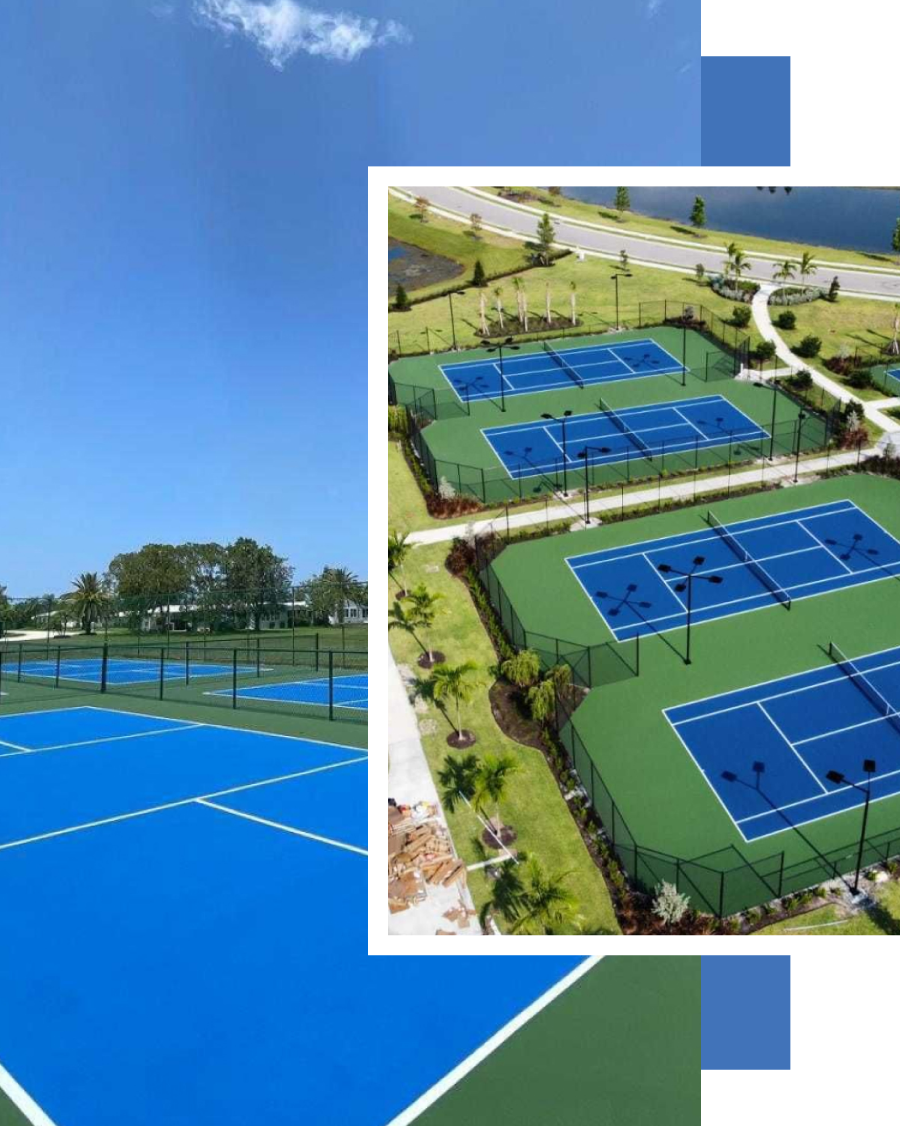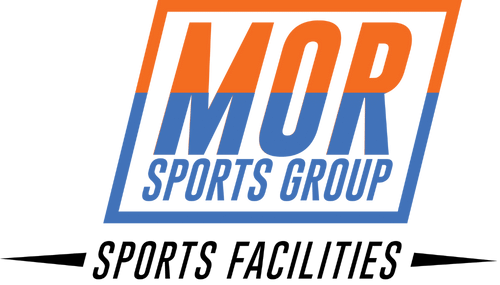
Resurfacing
Tennis Court Resurfacing in Florida
If you are searching for top-notch tennis court resurfacing services in Florida, your quest ends here. Our team is fully dedicated to upholding the quality and performance of tennis courts throughout the region. With an unwavering commitment to excellence and a track record of delivering exceptional outcomes, we have emerged as a renowned and award-winning specialist in the field. Our highly skilled craftsmen pay meticulous attention to detail and go above and beyond to ensure customer satisfaction. Whether you own a residential court, manage a private club, or oversee a public facility, our team is poised to revive your tennis court to its former glory. Experience the transformation of your court surface that surpasses your expectations by entrusting us with the task.
What is
Tennis Court Resurfacing?
It refers to the process of rejuvenating and refurbishing the playing surface of a tennis court. Over time, due to constant usage and exposure to various weather conditions, tennis courts can experience wear and tear. The playing surface may develop cracks, fade in color, or become uneven. Resurfacing helps restore the court to its optimal condition, ensuring a safe and enjoyable playing experience.
When is Tennis Court
Resurfacing Necessary?
It becomes necessary under several circumstances. Here are a few everyday situations where resurfacing is recommended:
Aging and Deterioration
As tennis courts age, it leads to cracks, unevenness, and color fading. Resurfacing enhances longevity and performance.
Cracks and Structural Damage
Cracks in the court surface affect aesthetics and pose tripping hazards. Resurfacing repairs cracks, ensuring a smooth playing surface.
Fading Color and Line Markings
Over time, colors and line markings fade due to sunlight, weather, or use. Resurfacing includes repainting and enhancing visibility and appeal.
Performance and Playability
Uneven surfaces, cracks, or worn-out areas impact the game with inconsistent bounces, reduced speed, and difficulty in movement. Resurfacing ensures a consistent playing surface and optimal performance.
The Benefits of Tennis Court Resurfacing
It offers numerous benefits for both players and facility owners. Let's explore some of the advantages:
Customized Court Design
Our team specializes in creating customized pickleball court designs to suit your preferences and space requirements, either outdoor or indoor pickleball court construction. We work closely with you to develop a design that reflects your vision and maximizes the functionality and aesthetics of the court.
Surface Options and Selection
We offer a range of surface options for pickleball courts, including acrylic, cushioned, and synthetic turf. Our experts will guide you in selecting the surface that best fits your playing style, budget, and maintenance preferences.
Court Size and Dimensions
We understand the importance of proper court size and dimensions for an optimal playing experience. Our team ensures that your pickleball court meets the official regulations and guidelines, providing accurate measurements and layout planning.
Fencing and Lighting Considerations
Safety and visibility are key factors in pickleball court design. We assist in selecting appropriate fencing options to enclose the court and provide security. Additionally, we offer expert lighting solutions to ensure excellent visibility during evening play, extending the usability of your pickleball court.
The Benefits of Tennis Court Resurfacing
It offers numerous benefits for both players and facility owners. Let's explore some of the advantages:
Enhanced Safety
Resurfacing eliminates cracks, unevenness, and other hazards, ensuring a safe playing environment for tennis enthusiasts. Smoother surfaces reduce the risk of trips and falls, minimizing the chances of injuries during gameplay.
Improved Durability
Resurfacing not only restores the appearance of the tennis court but also increases its durability. The court's lifespan is extended by addressing cracks and structural issues, saving costs on frequent repairs and replacements.
Optimal Performance
A well-maintained and properly resurfaced tennis court offers better ball bounce, consistent speed, and improved player mobility. This lets players focus on their game without distractions, creating a more enjoyable playing experience.
Aesthetics and Prestige
A freshly resurfaced tennis court with vibrant colors and well-defined line markings enhances the overall aesthetics of the facility. It adds a touch of professionalism and prestige, attracting more players and visitors.
Cost-Effective Solution
Compared to completely rebuilding a tennis court, resurfacing is a cost-effective solution that significantly improves appearance and performance. It allows facility owners to revitalize their courts without incurring exorbitant expenses.
Types of Tennis Court Surfaces
Hard Courts
Learn More
Hard courts are the most found tennis court surfaces. They consist of an asphalt or concrete base covered with a top acrylic or synthetic material layer. Hard courts provide a relatively fast and consistent playing surface. The ball bounces predictably and evenly, allowing players to execute a wide range of shots. Hard courts are famous for their durability and low maintenance requirements, making them suitable for indoor and outdoor play. Notable tournaments played on hard courts include the Australian Open and the US Open.
Clay Courts
Learn More
Clay courts are made of crushed brick, shale, or stone, topped with powdered red clay. Clay courts offer a slower playing surface compared to hard courts. The ball bounces higher and slower on clay, giving players more time to react and engage in longer rallies. The clay surface also provides more grip, enabling players to slide and recover more efficiently. The French Open is played on clay courts, known for their unique playing style and strategy.
Clay courts require regular maintenance, including watering and rolling, to maintain their desired playing characteristics.
Grass Courts
Learn More
Grass courts are the oldest type of tennis court surfaces. They feature a natural grass surface that is kept short and well-manicured. Grass courts offer a fast and low-bouncing playing surface. The ball skids and moves quickly through the grass, making it challenging for players to control and adapt their shots. Grass courts require meticulous care and maintenance, including frequent mowing and watering.
The Process of Resurfacing
Resurfacing tennis courts becomes necessary to maintain the quality and performance of tennis courts. The resurfacing process typically involves the following steps:

Demolition and Removal
The first step in resurfacing the tennis court is demolishing and removing the existing surface. This may include removing the top layer of the court, repairing any cracks or damage, and preparing the base for the new surface.

Installation
Once the old surface has been removed, the new surface is installed. The surface type may vary based on the court owner's preferences and requirements. It could be an acrylic or synthetic surface for hard courts, clay for clay courts, or grass for grass courts.

Maintenance
Regular maintenance is crucial after installing the new surface to keep the court in optimal condition. This maintenance may include cleaning, patching damages, and applying coatings or treatments to enhance durability and performance.
Cost of
Tennis Court Resurfacing
The cost to resurface tennis court can vary depending on several factors, such as the type and size of the court, the chosen surface materials, the extent of repairs required, and the region where the court is located. On average, the cost of resurfacing a tennis court in the United States can range from several thousand to tens of thousands. Multiple quotes from reputable resurfacing companies are recommended for a more accurate estimate based on your needs.
Choosing a Tennis Court Resurfacing Company
When selecting a tennis court resurface company, it's essential to consider the following factors:
Experience and Expertise
Choose a resurfacing company with extensive experience and knowledge in tennis courts resurfacing.
Reputation and References
Check the company's reputation through reviews and testimonials and ask for references from previous clients.
Quality of Materials and Workmanship
Ensure the company uses durable materials specific to your court surface and maintains high workmanship standards.
Cost and Timeframe
Compare quotes from different resurfacing companies, considering cost and estimated completion time.
Frequently Asked Questions
-
How much does it cost to resurface a tennis court in the US?
The cost to resurface tennis courts varies widely depending on factors such as court size, surface material, repairs needed, and location, ranging from several thousand dollars to tens of thousands on average.
-
How to repair the tennis court surface?
Repair methods depend on the type of damage, with options including crack fillers for minor cracks and patching or resurfacing for more extensive damages. Consulting a professional resurfacing company is recommended for an accurate assessment and appropriate repair solutions.
-
What is an acrylic tennis court?
An acrylic tennis court is a hard-court surface with an acrylic coating applied over an asphalt or concrete base, providing a smooth and durable playing surface. Acrylic tennis court surfacing enhances the court's performance, offering players consistent ball bounce and a comfortable playing experience.
-
How long does acrylic coating last?
The lifespan of an acrylic coating on a tennis court can vary based on factors such as usage, maintenance, and climate conditions. On average, it lasts around 4 to 8 years before requiring resurfacing or maintenance.
Quick Links
Contact Details
Phone: (239) 292-3102
Email: Info@morsportsgroup.com
Address: 9401 Corkscrew Palms Circle
Estero, FL 33928
All Rights Reserved | Site by Spearlance
Terms and Conditions | Privacy Policy

